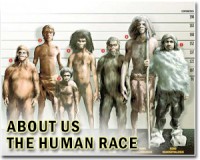| . |  |
. |
Long Beach, California (AFP) Feb 13, 2010 A gas proven deadly in chemical weapons could one day be used to put people into life-saving suspended animation. While hydrogen sulfide is toxic in large doses, small amounts of the gas have the potential to make animals appear dead for a while then allow them to wake up unharmed, according to biochemist Mark Roth. "I think we are on the path of understanding metabolic flexibility in a significant way," said Roth, whose work at an eponymous lab in Washington State has gotten funding from a research arm of the US Department of Defense. "In the future an emergency medical technician might give hydrogen sulfide to someone suffering serious injuries and they might become a little more immortal giving them time to get the care they need." Suspended animation takes place in the natural kingdom, with bears hibernating through winters while plant seeds and bacterial spores are able to biologically sleep for millions of years, according to the researcher. It has also long been fodder for science fiction. "Usually when I mention suspended animation people will flash me the Vulcan peace sign," Roth said while explaining his research at a TED Conference the ended here Saturday. Roth found that hydrogen sulfide in bonds in spots in bodies that would usually be occupied by oxygen, ostensibly becoming a sort of dimmer switch for metabolism. "We did it with a mouse; this was cosmic," Roth said. "We found a way to do this with a mammal. All you had to do was put it in room temperature and it was no worse for the wear." Roth's lab has completed early phase human trials but hasn't actually tried the process in a person. "We should know in a few years if it works or not," Roth said. "You want to plant a flag and people will come and then think about how to use it in other ways."
Share This Article With Planet Earth
Related Links All About Human Beings and How We Got To Be Here
 Hair sample reveals picture of ancient man
Hair sample reveals picture of ancient manCopenhagen, Denmark (UPI) Feb 12, 2009 Scientists from the University of Denmark say they've reconstructed the first detailed genome of an ancient human by analyzing a tuft of hair. The hair was found in Greenland in the 1980s and its owners nicknamed "Inuk," meaning "man" in Greenlandic. "Inuk's receding hairline, brown eyes, dark skin and shovel-shaped front teeth are all dictated by his 4,000-year-old genetic codin ... read more |
|
| The content herein, unless otherwise known to be public domain, are Copyright 1995-2010 - SpaceDaily. AFP and UPI Wire Stories are copyright Agence France-Presse and United Press International. ESA Portal Reports are copyright European Space Agency. All NASA sourced material is public domain. Additional copyrights may apply in whole or part to other bona fide parties. Advertising does not imply endorsement,agreement or approval of any opinions, statements or information provided by SpaceDaily on any Web page published or hosted by SpaceDaily. Privacy Statement |